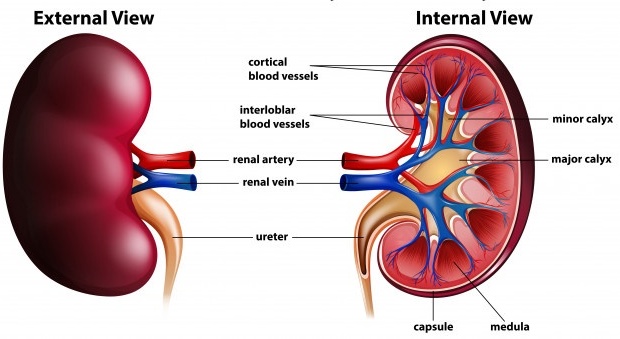Urinary stones are an aggregation of chemical substances dissolved in urine. When the concentration of these substances reaches a particular point, they crystallize and form stones. The stones may form anywhere in the urinary tract but are most commonly seen in the kidney and ureter.

Treatment modality depends upon the size, location and nature of the stone and the condition of the patient. It may vary from conservative therapy to surgery. Surgical Management is done to preserve the kidney function while maximizing stone removal and reducing patient morbidity.
Kidney Stone can be removed by one of the methods:
- Shockwave lithotripsy
- Ureteroscopy
- Retrograde Intrarenal Surgery (RIRS)
- Percutaneous nephrolithotomy or percutaneous nephrolithotripsy
- Open surgery
Shock Wave Lithotripsy :
In this type of procedure, X-ray or ultrasound is used to detect the stone. The high-energy shock waves are directed towards the stone. These waves pass through your skin and break the stone up into small pieces. The doctor might put a slim tube known as a stent into the ureter to help the small pieces pass out through the urine.
Recovery time of Kidney stone removal through shockwave lithotripsy usually takes about an hour and the patient can go home on the same day. The Stent will be removed after a few weeks.
Ureterorenoscopy:
In this method, to remove Kidney stone incision is not necessary, a thin scope to detect and remove kidney stones. The scope is passed into the kidney through the bladder and ureter. For larger stones, the laser is passed through the scope to break up the stones.
After this endoscopic procedure, recovery time is short. Patients can go home on the same day or an admission of a couple of days. If a patient has a stent for draining the urine, they will need to go back to get it taken out after a few weeks. It is imperative to get the stent removed within the stipulated time period to prevent other complications.
Retrograde Intrarenal Surgery:
It can be easily used for stones anywhere in the tract. It is especially suited for patients where Shockwave lithotripsy cannot be performed (bleeding disorders; obesity) or has failed. Its advantages include no incision on the body, short hospital stay & early recovery. However, the procedure is expensive as the equipment is costly, there is a chance of the scope to break, and even doctors need special training to perform it.
Percutaneous Nephrolithotripsy
For larger stones, or if lithotripsy is unable to break it up enough, this type of surgery is an option. A small tube is used to reach the stone and break it using high-frequency sound waves. The surgery takes about 20 to 45 minutes. Patients will need to stay in the hospital for two days to a week afterwards, as recommended by the doctor.
Open Surgery for kidney stones:
Today, this is a rare option for kidney stone treatment. Only for very large stones or if the other types of treatment cannot remove or crush the stone. The surgeon makes a cut on the flank or side and into the kidney and removes the stone through the opening. A stent will be placed in the ureter to drain the urine. Patients will need to stay in the hospital for six to nine days and the recovery period is longer as compared to the other kidney stone removal procedures.
Patients must drink lots of water to flush out the small pieces of stone through the urine after a kidney stone removal procedure and while there is a stent put in.
Text Credits: https://www.rghospitals.com/blog



